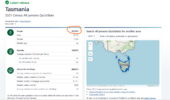Cunnington Cartel
All Australian
- Nov 18, 2022
- 827
- 1,319
- AFL Club
- North Melbourne
1. The stadium design (and more accurate estimation of cost) hasn’t been finalised yet.Returning to this comment, to win the battle, finding a way to meet people's concerns is more useful than dismissing them as bitter and twisted. The pro-stadium movement need to find a way to assure people that the cost won't go over $715 million, and the Liberal Party in particular need to show they're taking healthcare and housing seriously. Then people might change their stance. Perhaps they could propose the AFL grant a licence with the guarantee of building a new stadium 10-15 years in, buying them time to do something about healthcare and housing now.
2. The Liberal government have done a pathetic job in educating the public about the benefits of this project (although it’s not helpful when so much misinformation has been shared by the other camp).
3. The government are investing record amounts into health and housing. It will never be enough due to Tasmania’s unique demographic and economic challenges.
4. A major justification for this project is to “grow the economy”. Making it more diversified by opening the state up to events, industries and jobs they’ve never had the chance to attract in the past. This will certainly not fix some of the issues mentioned, but it will be a step in the right direction.
4. The club will run at a loss if they have to play at Blundstone Arena that long. They’ll also fail to attract and retain players and spectators (particularly interstate visitors) if they’re operating out of the worst home ground (by a long way) in the entire league. This has been considered and ruled out by those who prepared the business case as well as the AFL and its 18 clubs. If you’re going to do it, you have to do it properly.







